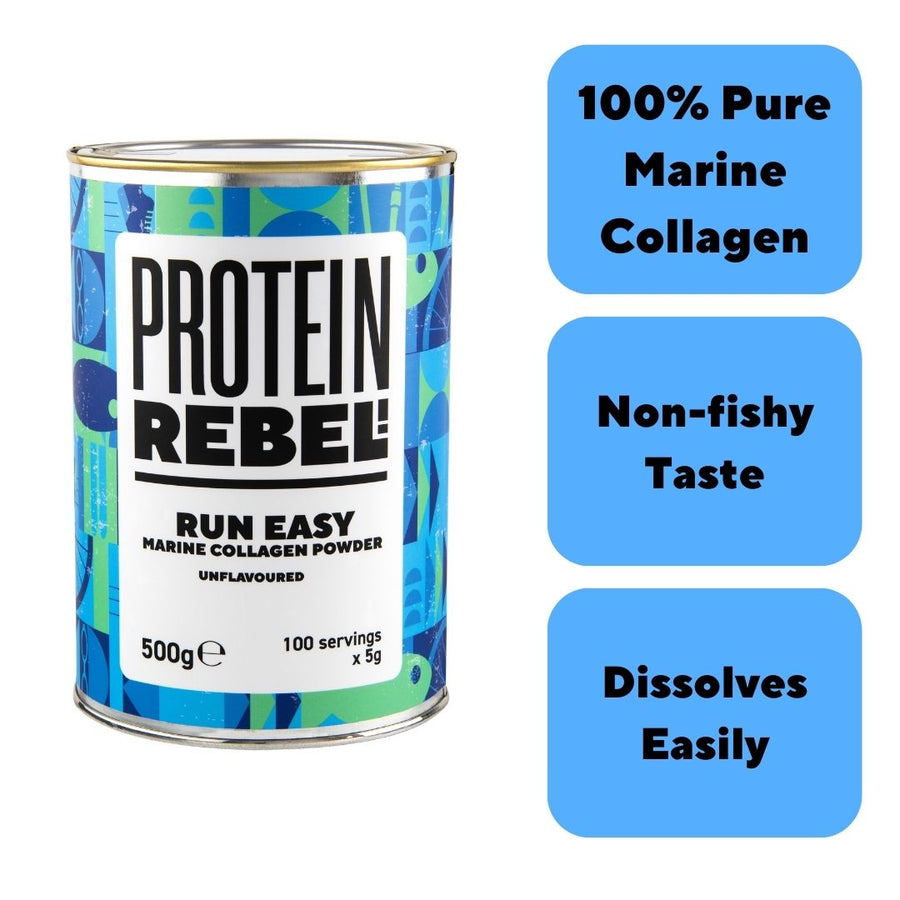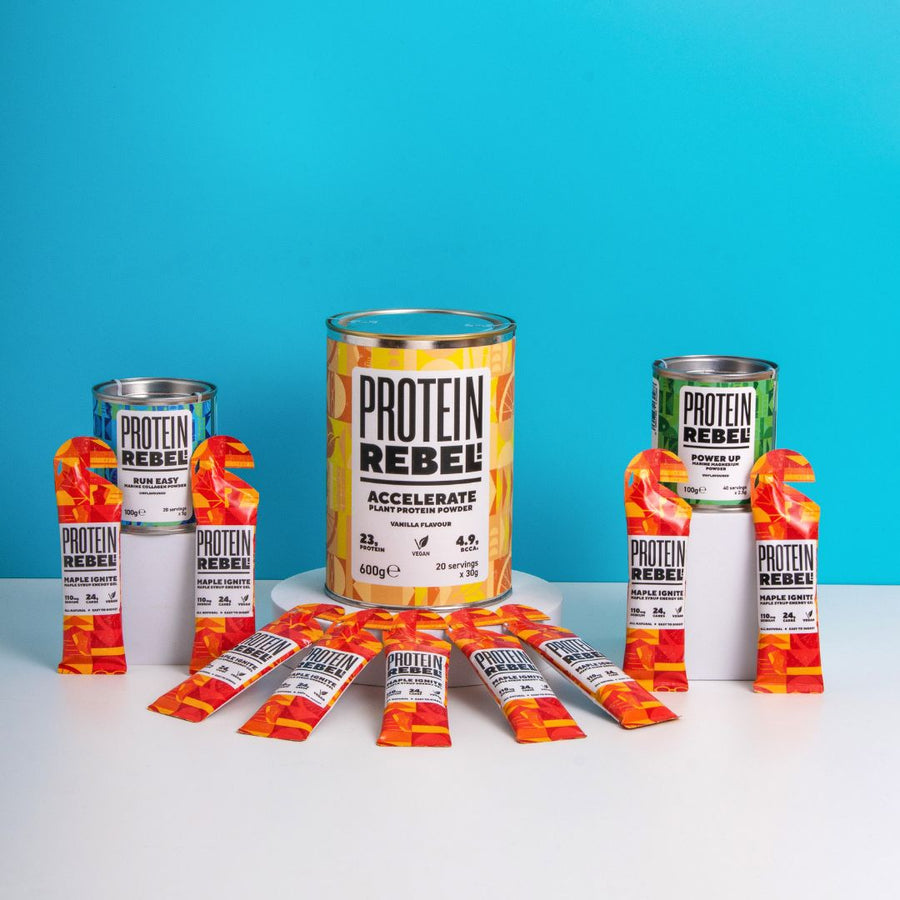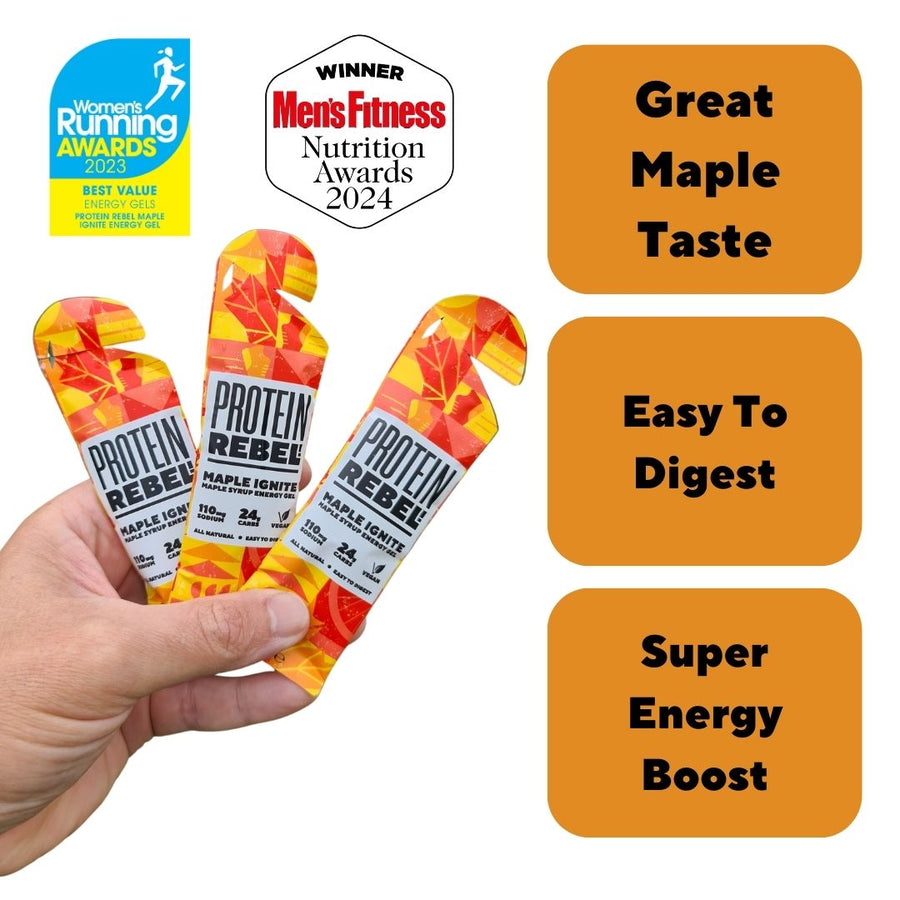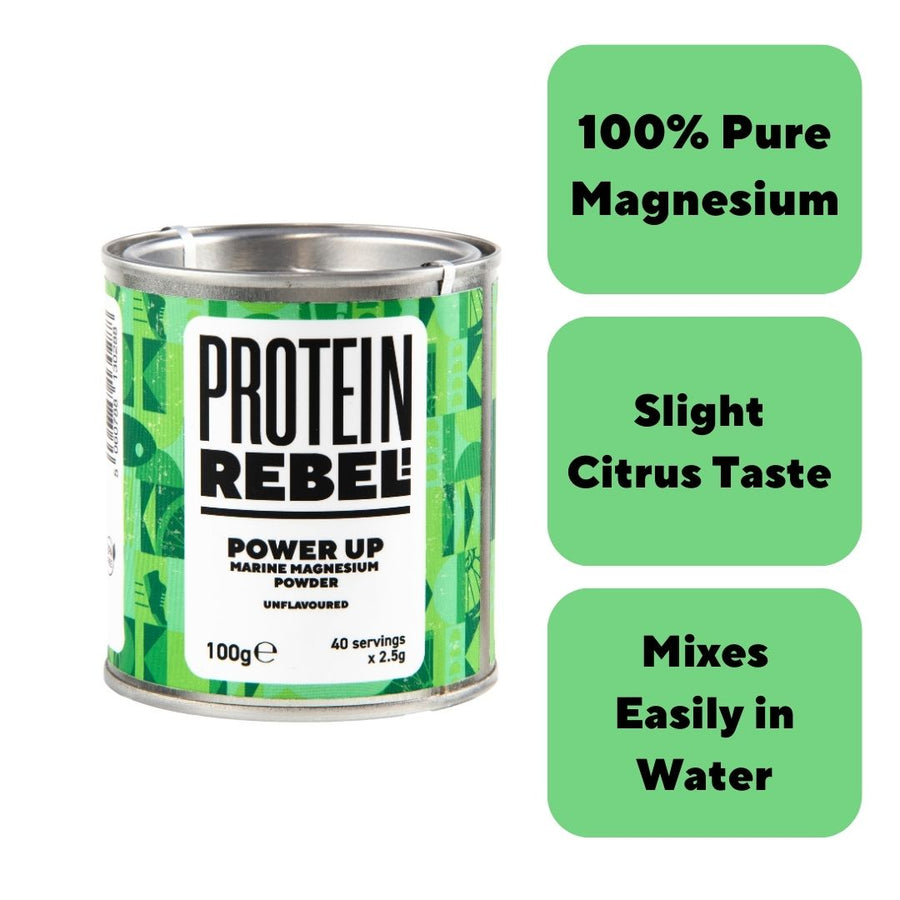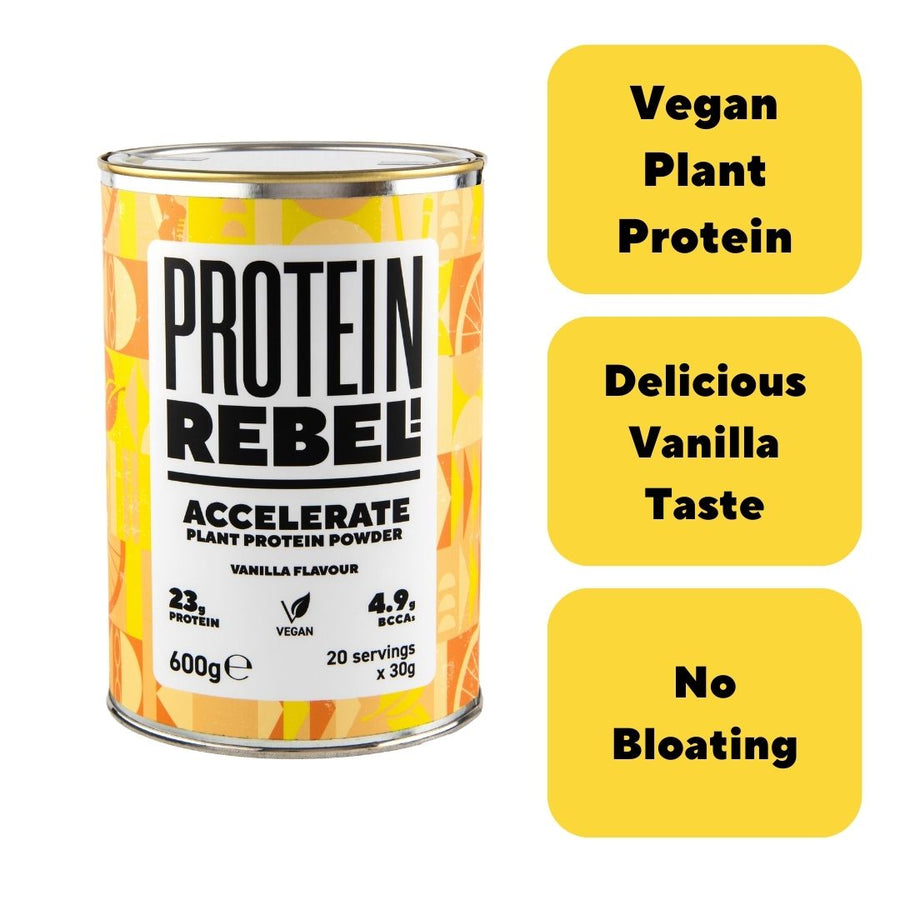Electrolytes for Running: A Complete Guide
As runners, we’re always trying to run faster, longer, or over more challenging terrain. But no matter how much you train or how well you fuel beforehand, there’s one thing that can make or break your performance: electrolytes.
Electrolytes are needed for keeping your body functioning during a run, especially when you’re sweating on a long summer slog or pushing through a big event. Without them, you’re risking cramps, additional fatigue, or even more serious health issues.
In this complete guide to electrolytes for runners, we’ll break down everything you need to know about electrolytes and how they impact running performance.
Understanding electrolytes will help you avoid hitting the wall, perform to a higher standard, and recover faster.
Let’s start with the obvious question:
What Are Electrolytes?
Electrolytes are minerals in the human body that carry an electric charge. They help regulate everything from muscle contractions to nerve signals. The most important ones for runners are sodium, potassium, magnesium, and calcium. These minerals are found in your blood, sweat, and urine, and they play a massive role in keeping you hydrated, powering your muscles, and maintaining your body’s wellbeing balance.
Sodium
Controls fluid balance and helps your muscles and nerves function.
Potassium
Works with sodium to regulate hydration levels and supports muscle contractions.
Magnesium
Aids energy production and muscle relaxation, critical for preventing cramps and helping you to get a good night’s sleep.
Calcium
Essential for muscle contractions and bone health.
When you run, you lose these electrolytes through sweat, especially sodium and potassium. If you don’t replace them, your body struggles to stay hydrated, and your performance takes a hit. That’s why electrolyte balance and cramping in runners is such a hot topic. Essentially, all you need to know is if you lose too much, you’re in for a tough time.
When Were Electrolytes Discovered?
The concept of electrolytes dates back to the 1880s, when Swedish scientist Svante Arrhenius introduced the idea of ions—charged particles—in solutions. His work laid the groundwork for understanding how minerals like sodium and potassium conduct electricity in the body.
It was decades later, in the 20th century, when researchers began connecting electrolytes to athletic performance.
In the 1960s, the development of American sports drinks like Gatorade brought electrolyte supplements into the mainstream, being produced to replace what athletes lose during intense exercise. Since then, studies have continued to develop our understanding of how electrolytes and running performance are linked, making them a staple in endurance sports.
Electrolytes and Hydration
You’ve probably heard that hydration is key for running, but you may not realise how much electrolytes and hydration go hand in hand.
Water alone isn’t enough to solve your hydration issues. Without electrolytes, your body can’t properly absorb or retain the water you drink. Sodium, especially, helps your body hold onto fluids, ensuring they get to your muscles and organs via the bloodstream rather than just passing through the body.
When you sweat, you lose both water and electrolytes, which throws off your body’s water and electrolyte balance.
Adding electrolytes to your hydration strategy helps your body maintain hydration levels, keeping you energised and reducing the risk of cramps or fatigue.
What Happens if Your Body is Low on Electrolytes While Running?

Running low on electrolytes during a long run is like trying to drive a car with a flat battery—it’s not going to end well. Here’s what can happen:
-
Muscle Cramps: Low sodium or magnesium can cause leg cramps, especially in your calves or hamstrings. This is a big part of the reason why electrolyte balance and cramping in runners is so closely studied.
-
Fatigue: Without enough potassium or sodium, your muscles can’t contract efficiently, making every step more difficult.
-
Dizziness or Confusion: Severe electrolyte imbalances, especially low sodium levels, can mess with your brain’s signals, leading to disorientation.
-
Hyponatremia: This is a dangerous condition where your blood sodium levels drop too low, often from drinking too much water without taking in enough electrolytes. Symptoms include nausea, headaches, and, in extreme cases, seizures. Hyponatremia is a major risk in marathons and ultras, especially for slower runners who overhydrate without fuelling properly or taking in electrolytes.
These issues can derail your run, whether it’s a training session or a race. When it comes to recovery post marathon, low electrolytes can also slow down muscle repair and leave you feeling exhausted for days.
How to Replace Lost Electrolytes
Replacing electrolytes is straightforward, but it requires planning. Here are some of the best ways to keep your levels topped up:
-
Electrolyte Drinks: Natural sports drinks like coconut water or industrial versions like Lucozade provide a mix of sodium, potassium, and sometimes magnesium. Just be
careful with coconut water as it’s high in potassium but fairly low in sodium. -
Electrolyte Sachets: These are portable powders you mix with water, perfect for long runs or races. They’re precisely balanced and easy to carry in a running vest.
-
Food Sources: Bananas (potassium), salted nuts (sodium), or Greek yoghurt (calcium) are great post-run snacks. To keep topped up on electrolytes during runs, our Maple Ignite Running Gels contain a naturally-occurring range of electrolytes from the maple syrup and sea salt
-
Magnesium Powder: Magnesium powder dissolves easily in water or other drinks and is a highly effective way to keep topped up on magnesium. It helps sleep and recovery, prevents cramps, and is great for electrolyte loading before marathon events to help make up for any losses that occur.
Start replacing electrolytes during your run, especially if it’s over 60 minutes or conditions are hotter than usual. Sip an electrolyte drink every 15-20 minutes, and consider an electrolyte sachet once per hour or maple syrup gel 2–3x per hour for longer efforts. After your run, focus on electrolyte rich foods to aid your recovery.
How Many Electrolytes Do Runners Need?

The amount of electrolytes you need varies depending on your sweat rate, run duration, and conditions.
On average, runners can expect to lose 400-800mg of sodium per litre of sweat, with potassium losses often reaching around 200-400mg.
Here’s a rough guide to how much electrolytes you should take while running, but use this as a starting point and find your own ideal amounts:
-
Short Runs (<60 minutes): You might not need extra electrolytes unless it’s hot or you tend to sweat a lot. Water and a balanced diet should suffice.
-
Medium Runs (60-90 minutes): Aim for 300-500mg sodium per hour, plus 100-200mg potassium.
-
Long Runs or Races (>90 minutes): Target 500-1000mg sodium per hour, 200-400mg potassium, and smaller amounts of magnesium (50-100mg).
When and How To Take Electrolytes
Before
For long runs or races, consider “electrolyte loading” 1-2 days in advance. Add extra salt to meals (e.g., sprinkle on avocado toast).
Start sipping an electrolyte sachet with water within the first 30-45 minutes, especially in hot or humid conditions. Plus, take maple ignite gels according to your nutritional needs (each sachet contains 24g carbs, 110mg sodium plus electrolytes from maple syrup).
After
Replenish your electrolyte levels within 30 minutes of finishing a run to support recovery.
Practice your electrolyte strategy during training. Test different electrolyte supplements to find what sits well in your stomach, especially for long races where GI issues can ruin your day.
Electrolyte Balance and Cramping in Runners
Low sodium or magnesium levels are a significant cause of cramps.
Magnesium also plays a role in muscle relaxation, which helps both with preventing cramp, and with aiding recovery.
Frequently Asked Questions
Can You Overdose on Electrolytes?
Yes, but it’s rare and fairly unlikely. Electrolyte overdose can occur if you take in way too much sodium or potassium, especially without drinking enough water. Symptoms include bloating, nausea, or irregular heartbeats. Stick to recommended doses (ideally no more than 1000mg sodium per hour during long runs unless you’ve been tested and are a very
salty sweater) and always drink enough water in line with thirst.
If you’re using high electrolyte drinks or running electrolyte sachets, check the labels to avoid overloading. Most runners won’t have to deal with an overdose, but it’s still worth being mindful, especially during ultras.
Can You Get Electrolytes in Pill Form?
Yes, but this isn’t the most effective way to top up electrolytes. Pills need to be small and easy to swallow, which means they are likely to contain a fairly small dose of electrolytes. Energy gels that contain electrolytes, electrolyte drink sachets, and foods high in electrolytes are all more reliable options.
Our Maple Ignite Running Gels and Maple Coffee Gels deliver natural electrolytes and carbs with just a few ingredients, designed by runners for runners. Try them today and keep your electrolyte levels on point for your next race!
